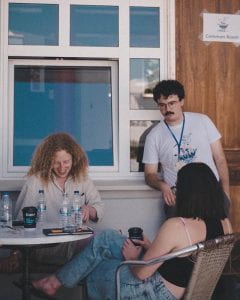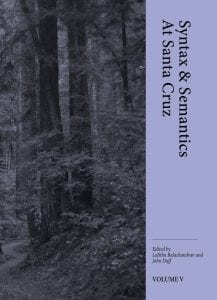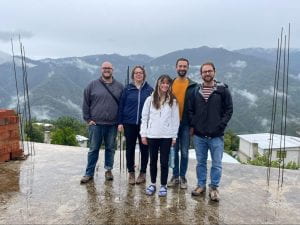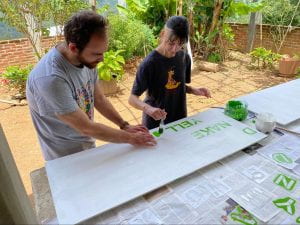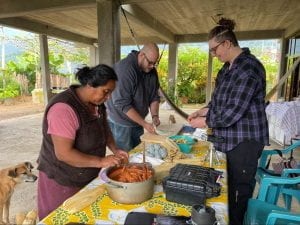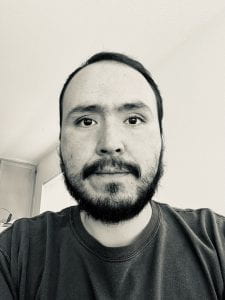
Professor Christian Ruvalcaba
The WHASC Editor got a chance recently to sit down with Christian Ruvalcaba, who joined the Department of Languages and Applied Linguistics this fall as an Assistant Professor.
Professor Ruvalcaba received the PhD in 2018 from the University of Arizona, and his research investigates morphosyntactic theory, intersections of place identity and language, participatory sociolinguistic research in the southwest, and Indigenous language reconstruction and revitalization. While at Arizona, he coordinated the Language Capital Project, an interactive map of resource centers for speakers of minority languages in Tucson, among other collaborative projects.
WHASC Editor: How did you get into linguistics?
Ruvalcaba: I think I became interested in language as a kid. I grew up in the Arizona-Sonora borderlands where there is a lot of language contact, not just between Spanish and English, but also with Indigenous languages. In Sonora, I attended a bilingual school called Instituto Americano. Bilingual education is common in northern Mexico, and it stems back to the English schools that were set up to educate American children in the decades where Americans took over the region and its industries (mining, railroads, cattle). Despite attending bilingual school, I did not speak English when my family migrated to the US in 1994, and I was put into ESL (at that time, they were using the “pull-out” ESL model). In later years, my sister and I translated for our parents, and I had to learn to read in Spanish on my own. Even though this environment forces you to be constantly aware of language, at the time I wasn’t aware that you could learn about it in school or make a career out of it. In trying to develop my Spanish literacy, I read fiction and poetry from different Latin-American countries. Based on these interests, I decided that I wanted to study literature and philosophy, and I took classes in Irish and British literature at a community college in southern Arizona (unfortunately, there were no Mexican, borderlands, or Chicano literature classes available). Although I really enjoyed these classes, I still wanted to get a deeper understanding of the language structures themselves. Later, I took a class on language and logic, and the instructor told me that I could continue studying similar topics at the University of Arizona (the closest university to the town I lived in). He said that some of his students who had enjoyed the language and logic course went and on to major in linguistics. That was the first time I heard about the field. When I transferred to the university, I switched my focus to linguistics and philosophy.
WHASC Editor: What is a project that you are currently working on?
Ruvalcaba: There are a couple, and one of them is on the syntax of clausal possession constructions in English. I’m trying to finish an article on this topic based on an analysis developed in my dissertation. A more applied project is related to the revitalization of the Opata languages, specifically Teguima. This is a language that was traditionally spoken in Sonora and Arizona. According to some Mexican scholars, there have been no speakers of the language since the early (or mid) 20th century. Nevertheless, the language has influenced local varieties and is commonly found in local place names. A binational group of people who identify as Opatas or descendants of Opata are trying to recover their language and customs, and the majority of the information about the language comes from archival resources. This includes a description of the language written by the Jesuit priest Natal Lombardo, which was first published in 1702, religious texts, wordlists, and subsequent analyses based on these texts. I am working with a graduate candidate from UT Austin, Michael Everdell, to assist in these efforts by helping folks access relevant resources and files. We have identified a lot of relevant material at the Bancroft Library, so I’m hoping to find ways of making these available to the group I’m working with. I’m hoping to meet students and faculty at UCSC who are interested in collaborating on this project.
WHASC Editor: What is a big question in your subdiscipline that excites you, and why?
Ruvalcaba: This is a tough question! I’m not sure if this is a really big question, maybe more of an intersection, but the connection between language and space is very exciting to me. Most of my interests seem to stem from or gravitate to this intersection. In other words, how does language represent space (or location, place, paths etc)? How are these constructions extended to more abstract domains, such as possession and experience? Also, how does language contribute to the identity of a place, to the narratives that are associated with it, to its senses of belonging or exclusion? The latter question is also tied to notions of language and power, which has its own very exciting lines of inquiry (particularly in the context of heritage languages).
WHASC Editor: What is the most interesting thing you have seen/done/learned about in Santa Cruz so far?
Ruvalcaba: I’ve only been here 3 months, so I haven’t gotten a chance to see or do that much. But just seeing and exploring the natural landscape around here has been so interesting, especially coming from the southwest. If I had to pick one thing, I would have to say the fog. I have never experienced or seen anything like it before.
Welcome to the linguistics community at Santa Cruz, Christian!







